Mission type Ionospheric Harvard designation 1962 Beta Alpha 1 Rocket Thor DM-21 Agena-B Launch date 29 September 1962 Inclination 80.4656° Launch mass 145.6 kg | Operator DRDC SATCAT no. 424 Launch site Vandenberg LC-75-1-1 Inclination 80.4656° Period 1.8 hours | |
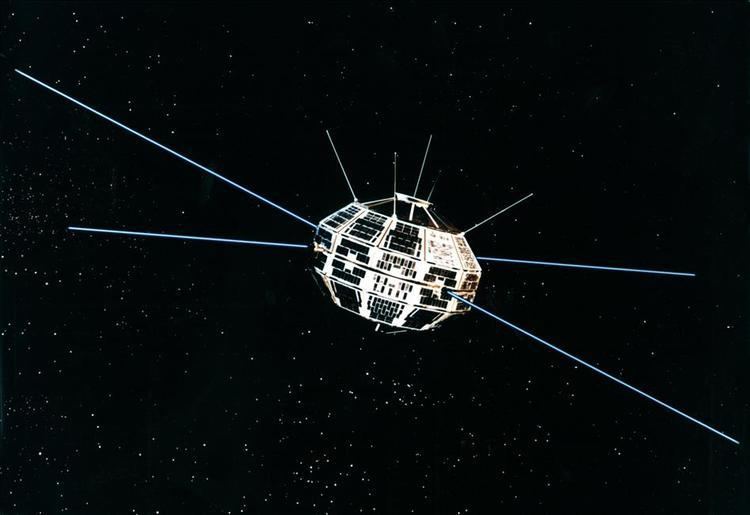 | ||
Similar WRESAT, San Marco 1, Astérix, Intasat, Ariel 1 | ||
Alouette 1 canada s first satellite canadian space agency
Alouette 1 is a deactivated Canadian satellite that studied the ionosphere. Launched in 1962, it was Canada's first satellite, and the first satellite constructed by a country other than the Soviet Union or the United States. Canada was the fourth country to operate a satellite, as the British Ariel 1, constructed in the United States by NASA, preceded Alouette 1 by five months. The name "Alouette" came from the French for "skylark" and the French-Canadian folk song of the same name.
Contents
- Alouette 1 canada s first satellite canadian space agency
- Alouette 1 model
- Mission background
- Satellite launch and mission progress
- Duplicate construction
- Experiments
- Post mission
- References
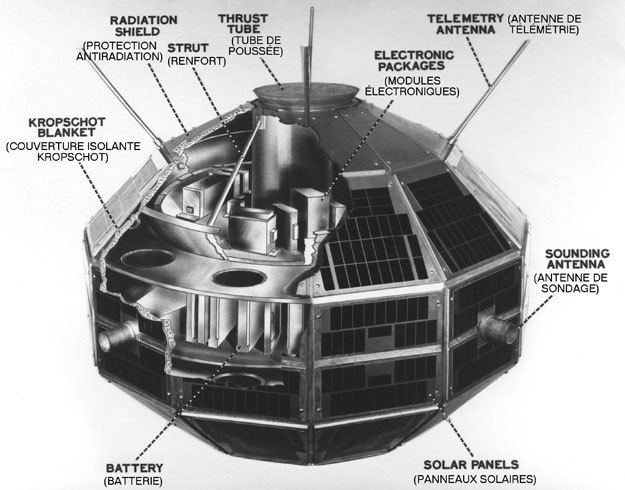
A key device on Alouette were the radio antennas consisting of thin strips of spring steel bent into a slight U-shape and then rolled up into small disks in a fashion similar to a measuring tape. When triggered, the rotation of the satellite created enough centrifugal force to pull the disk away from the spacecraft body, and the shaping of the metal caused it to unwind into a long spiral. The result was a stiff circular cross-section antenna known as a "stem", for "storable tubular extendible member".
Alouette 1 model
Mission background
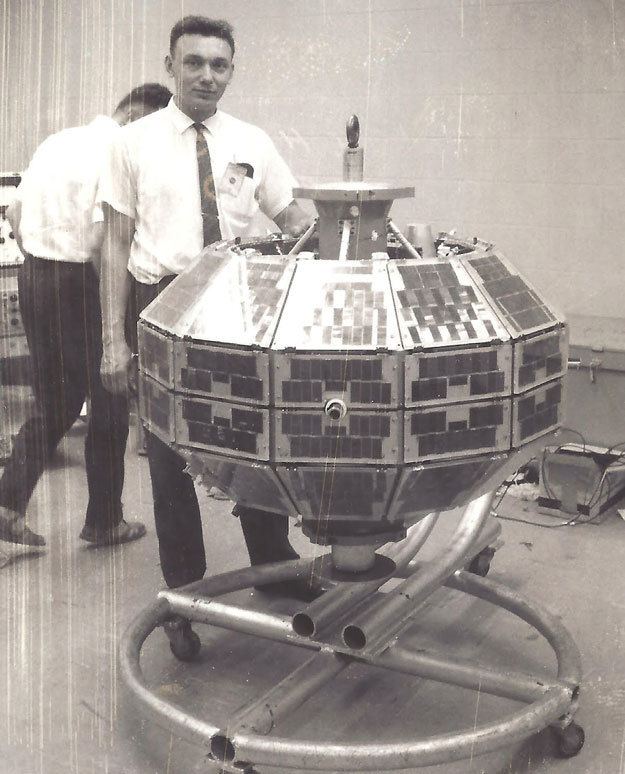
Alouette 1 was part of a joint US-Canadian scientific program. Its purpose was to investigate the properties of the top of the ionosphere, and the dependence of those properties on geographical location, season, and time of day. Alouette 1 was advanced for its time, and NASA initially doubted whether the available technology would be sufficient. Nevertheless, NASA was eager to collaborate with international partners. NASA was convinced to participate by the prospect of obtaining data on the ionosphere, and Canada had the additional objective of developing its own space research programme. The United Kingdom also aided the mission by providing support at two ground stations, in Singapore and at Winkfield.
Satellite launch and mission progress
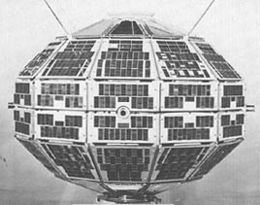
Alouette 1 was launched by NASA from the Pacific Missile Range at Vandenberg Air Force Base, California, USA at 06:05 UTC on September 29, 1962, into orbit around Earth. It was placed into an almost circular orbit of altitude 987 kilometres (613 mi) to 1,022 kilometres (635 mi) with an inclination of 80.5°. The launch made Canada the third nation, after the USSR and the United States, to design and construct its own satellite. Alouette was used to study the ionosphere, using over 700 different radio frequencies to investigate its properties from above.
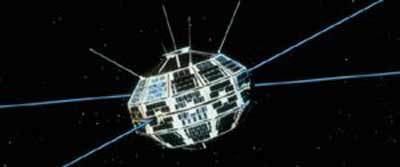
The satellite was initially spin-stabilised, rotating 1.4 times per minute. After about 500 days, the rotation had slowed to about 0.6 rpm and the spin-stabilisation failed at this point. It was then possible to determine the satellite's orientation only by readings from a magnetometer and from temperature sensors on the upper and lower heat shields. The orientation determinations obtained this way were only accurate to within 10 degrees. It is likely that gravitational gradients had caused the longest antenna to point towards the Earth.
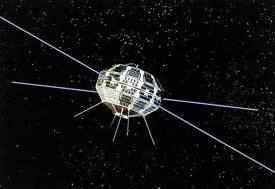
Alouette's mission lasted for 10 years before the satellite was deliberately switched off. The satellite remains in orbit; in 1966 it was estimated that Alouette 1 would remain in orbit for 1000 years.
Duplicate construction
Two satellites were built for redundancy in case of a malfunction; if the first unit failed, the second could be launched with only a couple of months delay. It took 3½ years after Alouette's proposal to have it developed and built. The satellites S27-2 (prototype), S27-3 (which became the launched satellite), and S27-4 (which became the backup) were assembled by Defence Research Telecommunications Establishment (DRTE) Electronics Lab in Ottawa. The mechanical frame and the deployable STEM antennas were made by the Special Products division of de Havilland Canada (DHC) in Downsview, Ontario, in a building which many years later (until 2012) housed the Canadian Air and Space Museum. The batteries used for Alouette were developed by the Defence Chemical, Biological, and Radiation Laboratory (DCBRL), another branch of DRB, and were partially responsible for the long lifetime of the satellite. The "Storable Tubular Extendable Member" antennas used were the first of DHC's STEM antennas used in space, and at launch were the longest (125 feet tip to tip). When completed Alouette weighed 145 kg (320 lb) and was launched from a Thor-Agena-B two-stage rocket. Alouette 1's backup was later launched as Alouette 2 in 1965 to "replace" the older Alouette 1.
Experiments
Alouette 1 carried four scientific experiments:
The satellite did not have a tape recorder to store data. It was only possible to obtain data when the satellite was in range of a receiving station.
Post mission
After Alouette 1 was launched, the upper stage of the rocket used to launch the satellite became a derelict object that would continue to orbit Earth for many years. As of September 2013, the upper stage remains in orbit.
The satellite itself became a derelict after circa 1972. It too remains a derelict in Earth orbit as of September 2013.
The Alouette 1 was named an IEEE Milestone in 1993. It is featured on the Amory Adventure Award.
